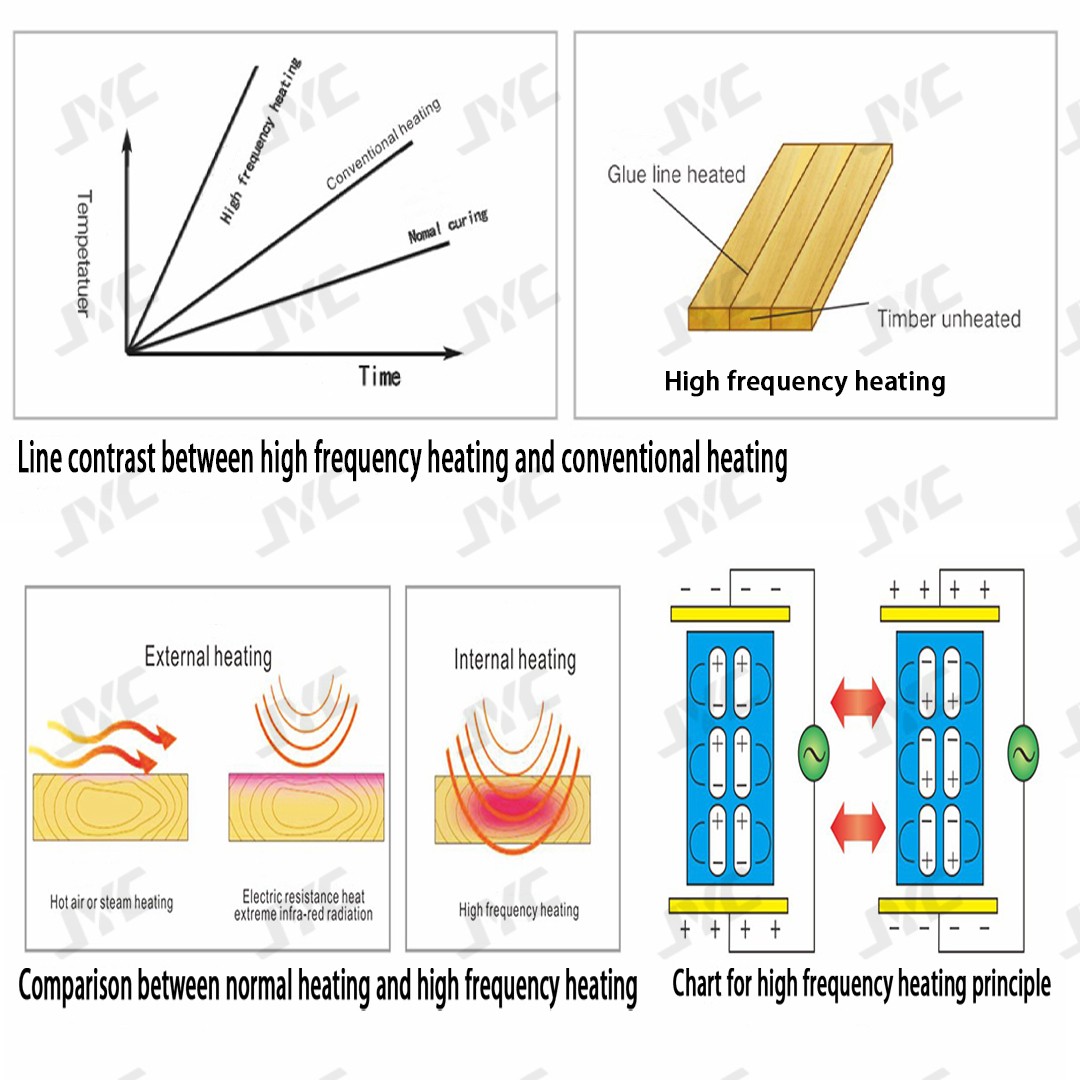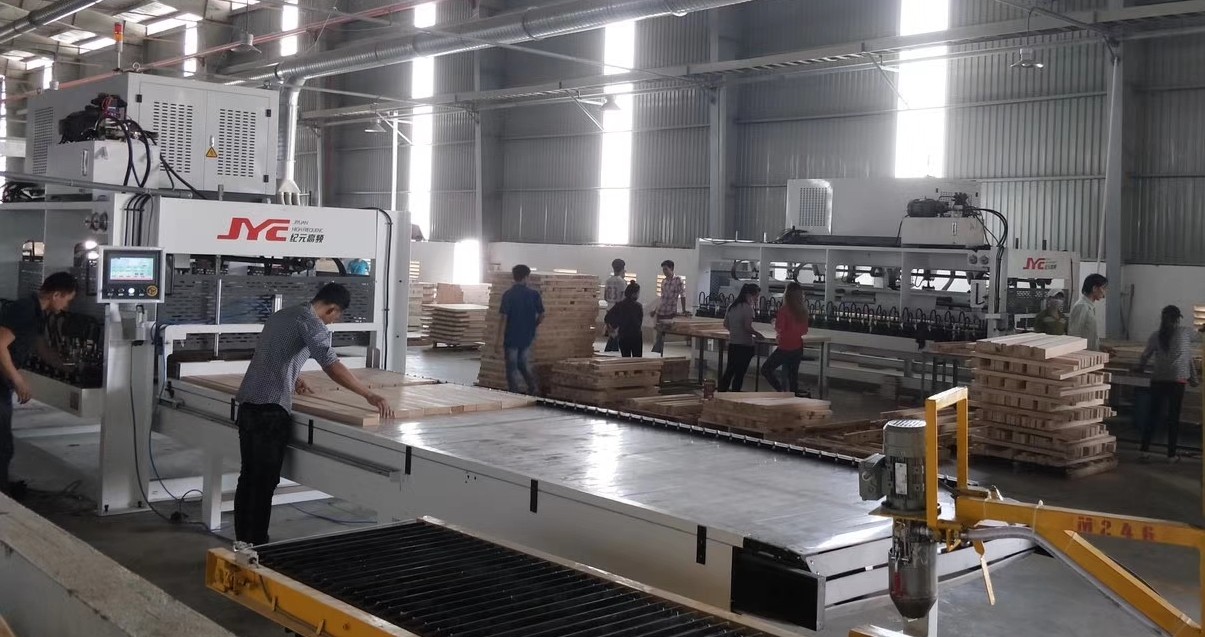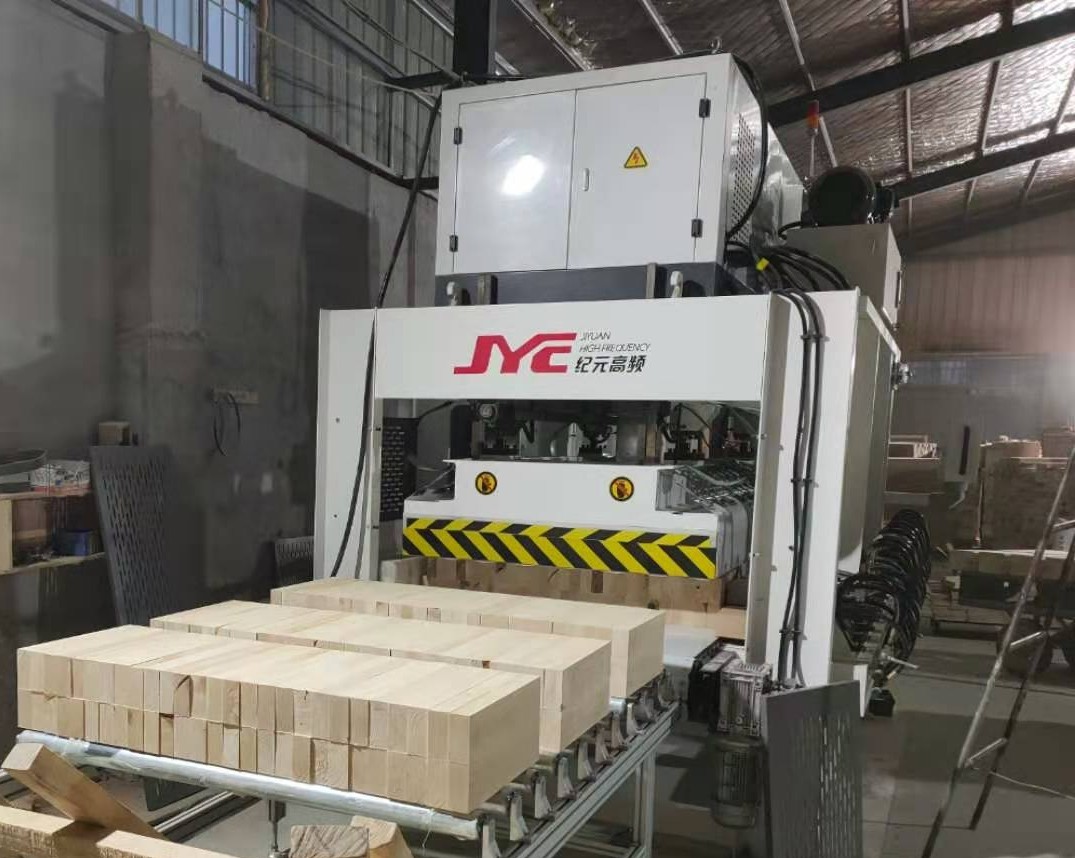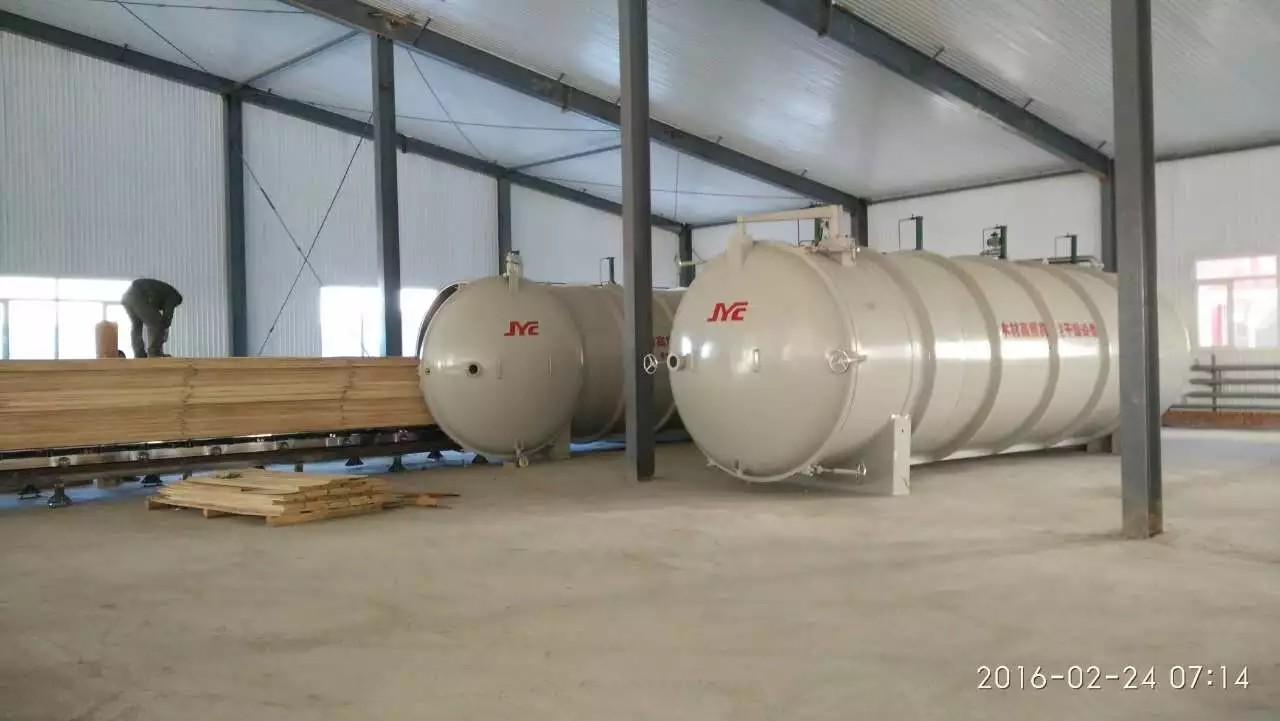After decades of development, the application of high-frequency dielectric heating technology to wood processing has become very mature. Many furniture companies, plank factories, musical Musical instrument manufacturing companies, etc., enjoy the manufacturing advantages of the high efficiency and high quality brought by high-frequency technology.
High-frequency dielectric heating technology is widely used in the bamboo and wood processing and manufacturing industry, mainly because it has the advantages of high efficiency and high stability, and has the characteristics of "selective and rapid and uniform heating". This technology can be applied to wood panel jointing, bamboo and wooden frame assembly, wood drying, furniture board bending, composite wood veneer lamination, and other processes.
The selectivity of high-frequency heating
When the material is in a high-frequency electric field, the water molecules of the material will become active and produce violent motion, thereby generating heat energy, and the water in the adhesive is more than the water in the wood itself, so the most first affected by the high-frequency electric field, it is heated first and permeates into the plate. For example, after high-frequency wood jointing, we will find that the temperature of the jointed plate itself is low, and the glue between the wooden board is warm, which is called the selectivity of high-frequency heating-Adjust the equipment to a fixed frequency and then only heat the material that needs to be heated through the heating time.
The JYC high-frequency jointing machine adjusts to a fixed high-frequency power and lets the plates are evenly stressed, and quickly heats the glue between the plates, which saves energy more effectively, and makes the plates after jointing more stable.
During the wood drying process, the traditional drying method cannot make the moisture content of the dried wood uniform, which will easily lead to the processed finished product, which is more prone to cracking and other problems due to the internal tension of the wood itself.
When the vacuum dryer performs vacuum and low-temperature drying, the value of the moisture content in each part of the wood is similar. During the drying process, where the moisture content of the wood is high, the heating will be faster, until the moisture balance, and then the uniform heating and dehydration work will be carried out. After this kind of wood is processed into a finished product, it is more stable.
During the drying process, the equipment has positive pressure on the wood, which plays a role in eliminating the internal stress of the wood, which can more effectively ensure that the wood after high-frequency drying will not be discolored, deformed, or cracked.
Different processing technology selects different frequencies and powers of high frequency.The key parameters of high-frequency equipment are not only frequency but also power. In general, the higher the frequency and the greater the power, the faster it will heat up. But this is not correct that the higher is better, the most suitable high-frequency power and high-frequency frequency should be determined according to the actual process and materials. Common industrial high-frequency frequencies are 6.78MHz, 13.56MHz, and 27.12MHz, the application timber processing industry is generally 6.78MHz.
When the high frequency is fixed, the selection of high-frequency power generally depends on the area of the heated material, that is the bonding area of the material. The larger the area, the greater the power required. The high-frequency power used in wood processing includes 1.5kw, 5kw, 10kw, 20kw, 30kw, 40kw, 50kw, 60kw, 80kw, 100kw, 120kw, 150kw, 200kw, etc. The more commonly value used is between 5kw--100kw. For example, the wooden frame precision making generally adopts 5-20kw, and the high-frequency panel jointing generally adopts 20-60kw.
The relatively high power such as 200kw is generally used in construction plywood because the material has large amounts of glue, a large processing area, and a high thickness of the material. High-frequency heating can make the glue in the multi-layer board quickly heat, permeate and solidify in a short time, which greatly improves the productivity and quality compared with the traditional splicing method.
Based on JYC's 30 years of experience in woodworking machinery manufacturing and customer service,our customers adopt high-frequency equipment, and the processing efficiency of the corresponding process is nearly 10-20 times higher than before.
In the traditional cold pressing or external conduction hot pressing, when processing this type of multi-layer board, due to the multi-layer superposition of glue and the high thickness of the material, it is difficult to heat all the glue on the inner layer of the board quickly and effectively. But high-frequency heating is a permeating and uniform heating method, the processing will be much faster and the finished product is more stable.




Previous: Low Carbon Mild Steel Wire Q195 And High Carbon Mild Steel Wire
Next: None.
Copyright:@2020-2021
Comments Please sign in or sign up to post.
0
0 of 500 characters used